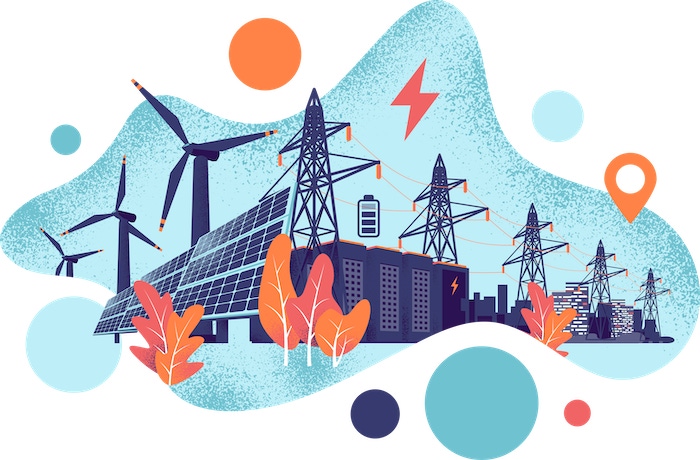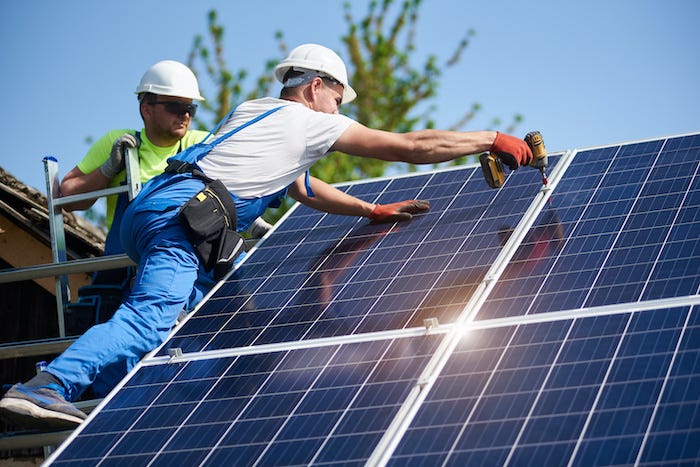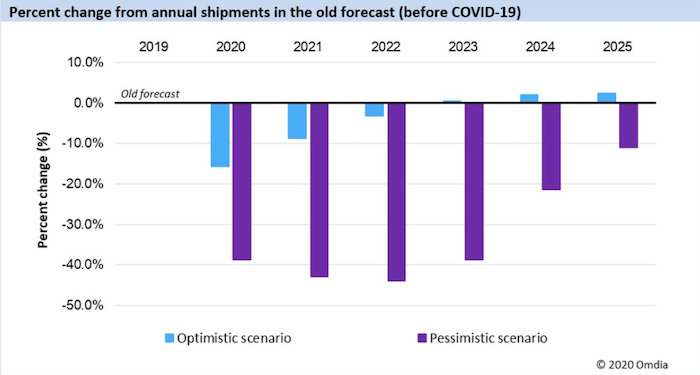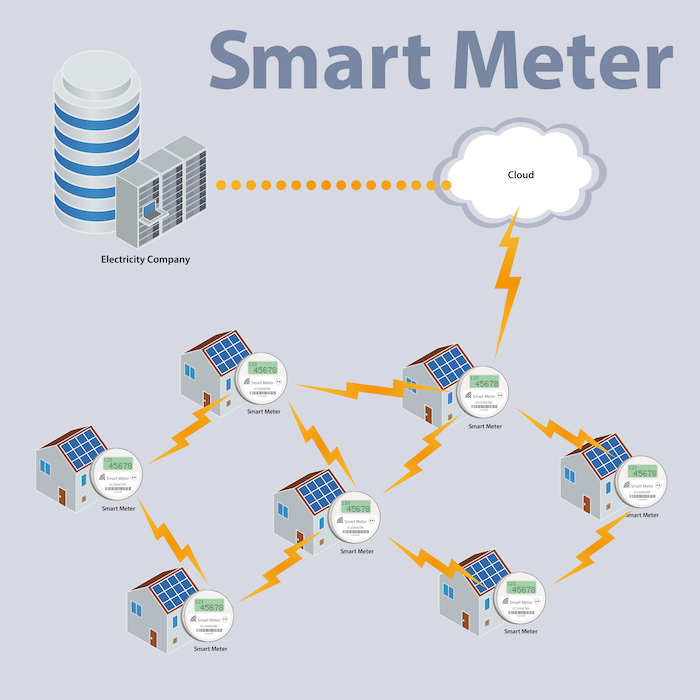The impact may have been predictable but the rebound holds surprises.
June 8, 2020

First the bad news: Although 2019 was overall a good year for renewable energy and smart grid/edge technologies, the COVID-19 ridden 2020s looks less promising. Electric utilities will continue to provide essential services during the pandemic but will probably spend less on renewables and grid systems in the near future.
Before proceeding, it should be noted that renewable energy systems are often tied together with electricity grid-connections technologies for several reasons. First, a grid-connected system allows people to power their home or small business with renewable energy while accessing electricity from the power grid when renewables aren’t available, i.e., during the nighttime and when the wind isn’t blowing. Batteries can be used to store excess residential and small business energy but are still fairly expensive.
Further, most states allow net metering in which excess electricity generated by grid-connected renewable energy systems "turns back" the electricity meter as it is fed back into the grid. This can be a money saver for homes and small businesses.
Unfortunately, the close connection between renewables and grid utilities have resulted in shared challenges during the COVID-19 pandemic. For example, there have been notable delays in renewable energy construction. Social-distancing requirements and permitting slow downs are resulting in delays for current and future renewable projects as well as improvements to the grid. Further, the supply chain for renewables – especially for solar – originate in Asia which means shipments will be delayed due to both COVID-19 and the ongoing trade war between the U.S. and China.
With 40 million plus Americans out of work, there may well be a decline in consumer demand for residential solar installations and battery/storage platforms in the home. Also, the overall decline in automotive sales is already putting a pinch on the sale for premium (battery powered) electric vehicles.
Additionally, a number of state governments and regional energy providers have frozen previously approved rate increases. The restrictions may result in pullbacks on grid tech investments, i.e., preparing residential units for electric vehicles.
Finally, with consumers and governments financially challenged by the impact of COVID-19, renewable public policy initiatives may loss momentum. Clean energy legislation may stall as state representatives have had to suspend or postpone sessions due to the pandemic. Even after legislatures return, the economic impact from COVID-19 may leave little money available for renewable tech.
All of these effects plus others are creating near-term challenges for the industries, but the long-term trends still look promising. This bounce-back has already been predicted for one element of the industry, i.e., the smart-meter market.
|
Solar panel construction impacted by COVID-19. (Image Source: Solar Panels Abode Stock) |
The global electric sub-meter (or smart meter) market has declined during the COVID-19 pandemic but is expected to see a rapid recovery in the post-coronavirus world.
|
Omdia predicts smart-meter shipments. (Image Source: Omdia Meter Trends) |
According to Omdia, total electric meter shipments from 2019-2025 could fall by as much as 28% due to COVID-19 (worst-case scenario). At the same time, however, COVID-19 could drive more spend than ever before on ‘beyond-the-meter’ software and services over the next ten years.
In the best-case scenario, cumulative meter shipments decline by only 3.2% over the next five years. Both the worse- and best-case scenarios depend upon the length of coronavirus lockdowns and other factors, notes the Omdia report. Yet, despite slowdowns in hardware markets, the pandemic might actually accelerate the future adoption of software and services.
For utilities with existing communicating meter infrastructure, post-COVID-19 investment could go more towards add-on software analytics to drive greater return from their initial investments, notes the report. For utilities with no/little existing infrastructure – additional use-cases in market could help businesses to finally understand the business case and justify the return-on-investment.
As one example, data analysis from smart meters could be used to discover, isolate and remove outages more efficiently. This will provide better utilization of maintenance crews that are already stretched thin by COVID-19 and natural emergencies such as fires, tornados and the like.
Smart meter analytics are made possible by Advanced Metering Infrastructure (AMI) software and services. According to Omdia, North America is well positioned to accelerate adoption of AMI software and services as 40% of all communicating electric, gas and water meters have adopted meter data management.
While COVID-19 will probably have an impact on hardware for the smart-meter market, the pandemic may well accelerate the utilities industry to transition from hardware to software. Either way, consumers and businesses should be the better for it.
|
Smart meter diagram. (Image Source: Smart Meter Diagram, Adobe Stock) |
RELATED ARTICLES:
John Blyler is a Design News senior editor, covering the electronics and advanced manufacturing spaces. With a BS in Engineering Physics and an MS in Electrical Engineering, he has years of hardware-software-network systems experience as an editor and engineer within the advanced manufacturing, IoT and semiconductor industries. John has co-authored books related to system engineering and electronics for IEEE, Wiley, and Elsevier.
About the Author(s)
You May Also Like








